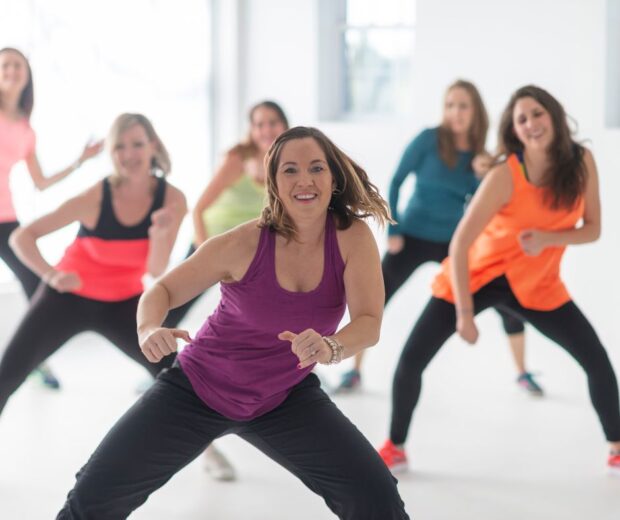Dance has always been a dynamic form of artistic expression, but its advantages go far beyond creativity. Participating in Dance courses can significantly improve both physical health and mental well-being. Whether you are a beginner or an experienced dancer and want to engage in Dance courses in Australia, structured dance classes offer an enjoyable and effective way to enhance overall wellness. Here’s a deeper look at the remarkable benefits of dance for health.
1. Full-Body Fitness and Strength
One of the main physical benefits of dancing is its ability to provide a complete workout. Dance requires the use of multiple muscle groups, engaging muscles, legs, arms, and back in coordinated movements. This full-body movement helps build muscle tone and strength and can improve both posture and physical endurance. Unlike exercises that focus on isolated muscles, dance classes help the body move, building functional strength and stamina
Ballet, for example, stresses basic movements and flexibility, whereas hip-hop and salsa promote endurance and cardiovascular fitness. You’ll notice improvements in balance, coordination, and flexibility, all of which are vital for daily exercises, regardless of the kind of dance you pick.
2. Cardiovascular Health and Stamina
Dance is a particularly good practice for improving cardiovascular fitness. Whether the dance involves furious jazz, salsa, or Zumba, it moves the body and raises the heart rate, making the cardiovascular system more resistant. Dance courses, if taken regularly, can lower pressure levels, increase circulation, decrease the cholesterol level and, therefore prevent heart problems and other cardiovascular diseases.
One of the reasons people stick with dance over the long term is its enjoyable nature. Music, rhythm, and movement keep lessons interesting and engaging, making it easier to maintain consistency. Dance, unlike typical cardio workouts like jogging or cycling, provides variation and enjoyment, making it a more sustainable training practice.
3. Improved Flexibility and Joint Health
Dance is a great approach to increase flexibility and joint mobility. Most dance classes start with a warm-up session that involves stretching exercises to assist relax muscles and enhance range of motion. Regularly executing these motions helps to improve flexibility, which is beneficial for general physical health and injury prevention.
Contemporary and modern dance styles, in particular, focus on fluid movements that require flexibility. Over time, participants in dance courses experience improved joint mobility, reduced muscle tension, and less stiffness. This is particularly beneficial for older adults, as maintaining flexibility and joint health becomes crucial in later years.
4. Mental Clarity and Cognitive Stimulation
Dance is not only an action of performing movement, but it is a package that includes several sessions for exercising the brain. New choreography, recalling routines, and coordinating your efforts with music involve certain cognitive skills. Research has disclosed that dancing helps to enhance memory, concentration and even problem-solving. For older adults, participating in dance courses can reduce the risk of dementia and enhance cognitive function.
Also, dancing releases endorphins which are chemicals in the brain known to make people happy and reduce stress. Through the incorporation of both physical activity and mental involvement, Dance courses promise to maintain both aspects of the body in a proper state of health, well-being of the mind, and stability of the emotion.
5. Emotional Expression and Stress Relief
It can be said that dancing is one of the few artistic methods likely to be helpful in terms of emotional release. Music also plays an emotional role in which the body’s movements and emotions can be expressed through musical sounds. Ballet or hip-hop jam can help to express people’s feelings and discharge stress, so this way, emotional health is improved.
The emotional connection to dance helps participants feel more grounded and centered. Many individuals find dancing soothing because it involves concentration and allows for complete immersion in the present moment. Regular dancing classes can help reduce anxiety and enhance overall mental wellness.
6. Social Interaction and Community Building
Another significant advantage of taking Dance training is the possibility of making social relationships. Group dancing courses develop a sense of community and belonging by bringing people from diverse backgrounds together to share a shared passion. These social contacts are essential for emotional well-being because they reduce emotions of loneliness and isolation.
Dance classes offer an inclusive and friendly atmosphere in which students can form connections and create a feeling of community. This feeling of community is especially advantageous for individuals who struggle to maintain social ties since it provides a welcoming environment in which to interact with others and build long-term relationships.
Conclusion
Participating in Dance courses is a comprehensive way to boost both physical and mental health. Whether you are looking to improve cardiovascular fitness, enhance flexibility, or relieve stress, dance offers a fun and engaging approach to achieving your wellness goals. The variety of dance styles available ensures that everyone can find a form of movement that resonates with them, making it easier to stay consistent and motivated in the long term.
For even more enriching Dance courses in Australia, LAENCANTADA COLLECTIVE is an ideal destination. Their expert instructors provide personalized guidance, ensuring that participants of all levels can grow and thrive. With a welcoming and inclusive environment, they foster creativity, community, and personal growth. Whether you are a beginner or a seasoned dancer, Laencantada Collective offers a transformative experience that will enhance both your dance skills and overall wellness.

